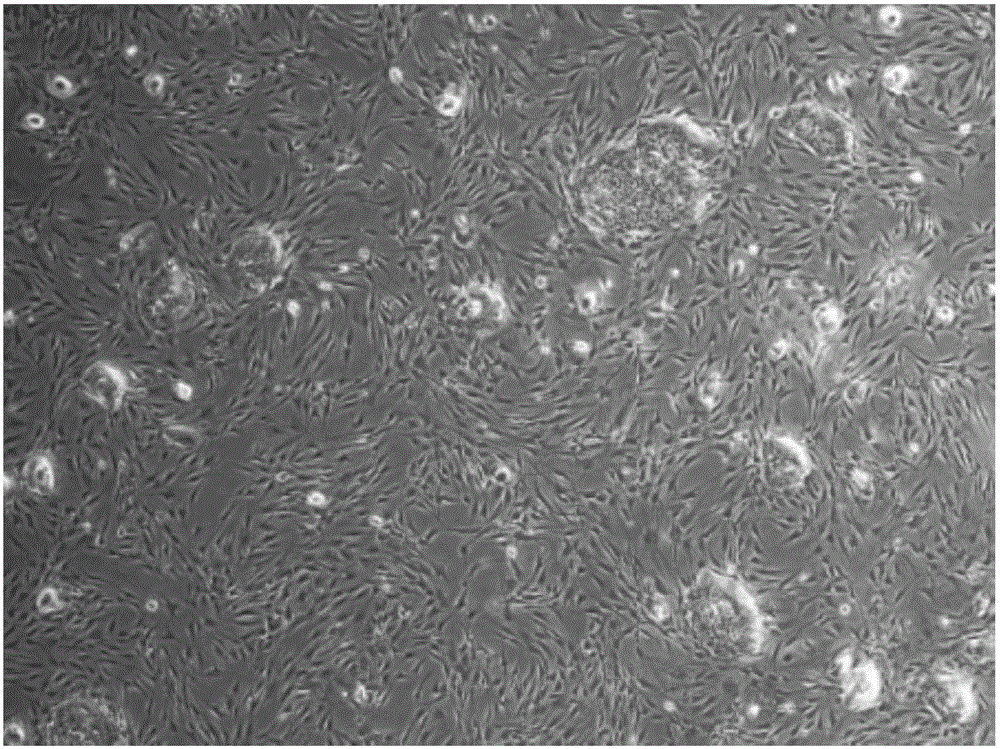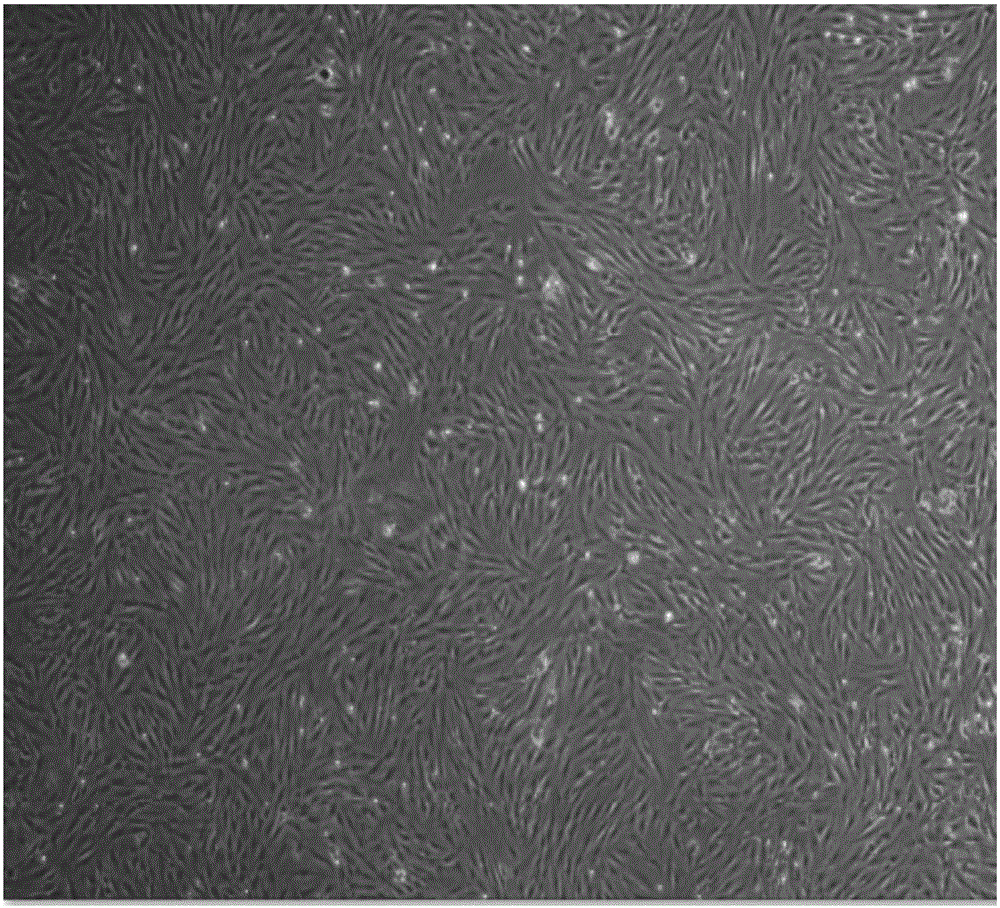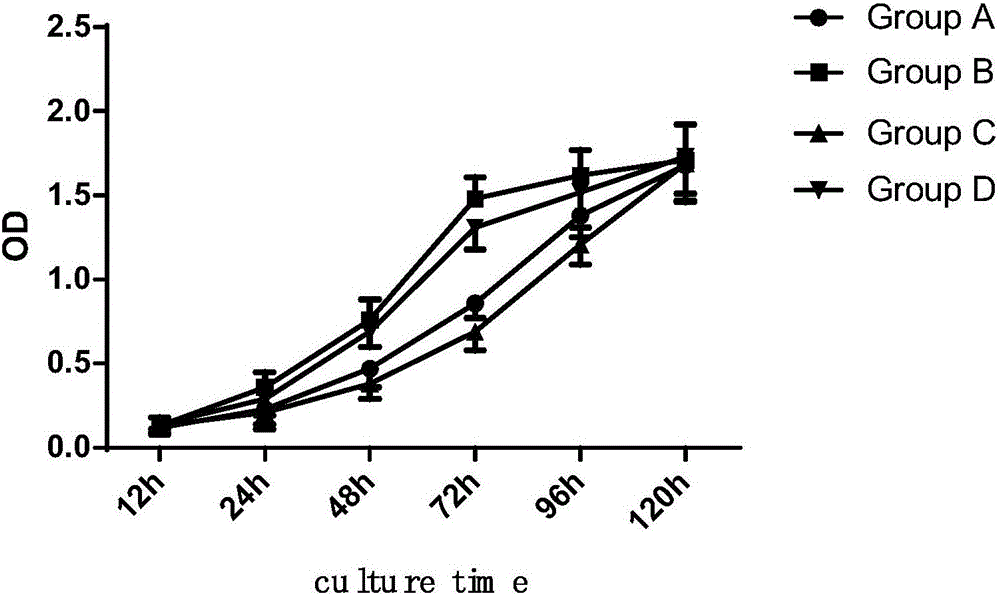Method for culturing skin-origin fibroblasts
A fibroblast and skin technology, applied in the field of separation and culture of fibroblasts, can solve the problems of skin-like characteristics that cannot widely represent all populations, inferior cell quality and quantity, and cumbersome operation steps, so as to ensure the normal shape of cells and reduce The number of cell proliferation and the effect of ensuring the number of cells
- Summary
- Abstract
- Description
- Claims
- Application Information
AI Technical Summary
Problems solved by technology
Method used
Image
Examples
Embodiment 1
[0046] [Example 1] Primary culture of fibroblasts: Under aseptic conditions, take normal skin behind the ear about 2cm*3cm, put it into sterile PBS and bring it back to the laboratory quickly, remove the subcutaneous tissue and blood vessels, and measure the volume and mass ratio Add digestion solution 1 (0.25% trypsin + 0.02M EDTA) at a ratio of 5:1 and treat overnight at 4°C. On the second day, the skin was taken out, the epidermis was removed, and digestive solution 2 (1 mg / ml type II collagenase) was added at a volume-to-mass ratio of 10:1, and treated at 37°C for 2 hours. Pass the above suspension through a 200-mesh sieve, blow the filtrate, and divide it into 4 equal parts for centrifugation at 500rpm for 10min, add the corresponding medium to resuspend, then add it to a T25 cell culture bottle, 37°C 5% CO 2 Culture overnight, and observe under the microscope whether the cells show radial or spiral growth.
[0047] After the skin tissue was treated with digestive juice...
Embodiment 2
[0048] [Example 2] Cell proliferation experiment: After the single layer of fibroblasts was digested by the digestive solution 1, according to the grouping situation, the corresponding medium was added to dilute the cell density to about 5×10 3 cells / ml, inoculated in 6 96-well plates at 100 μl / well, with 12 wells in each group, and there were no experimental wells on the periphery of the 96-well plates. Then put six 96-well plates in 37°C 5% CO 2 Culture in an incubator, and take a 96-well plate at 12h, 24h, 48h, 72h, 96h, and 120h to discard the culture medium, add MTT (50μl / well), 37°C, 5% CO 2 Cultivate for 4 hours, slowly absorb the culture solution and absorb the unreacted MTT along the well wall with water, pat dry the filter paper, then add DMSO (150 μl / well), shake at room temperature for 10 minutes, read the absorbance value of each well at a wavelength of 490nm, and calculate the Absorbance average.
[0049] The results showed that after 24 hours of culture, the c...
Embodiment 3
[0051] [Example 3] Cell scratch test: Fibroblasts cultured in four kinds of media were divided into 2*10 5 cell / well, inoculated into 6-well plate, 37°C, 5% CO 2 Cultivate overnight until the cells cover the six-well plate, use a sterile pipette tip to manually draw a few horizontal lines on the bottom of the six-well plate, wash with PBS for 3 times, add the corresponding medium, and take pictures at the same site every 2 hours to observe the cell migration .
[0052] Within 24 hours after cell scratching, the cell migration situation was photographed every 2 hours. The results showed that the cell migration speed in group D was significantly faster than that in the other groups. See Figure 4 .
PUM
 Login to View More
Login to View More Abstract
Description
Claims
Application Information
 Login to View More
Login to View More - R&D
- Intellectual Property
- Life Sciences
- Materials
- Tech Scout
- Unparalleled Data Quality
- Higher Quality Content
- 60% Fewer Hallucinations
Browse by: Latest US Patents, China's latest patents, Technical Efficacy Thesaurus, Application Domain, Technology Topic, Popular Technical Reports.
© 2025 PatSnap. All rights reserved.Legal|Privacy policy|Modern Slavery Act Transparency Statement|Sitemap|About US| Contact US: help@patsnap.com



